4 significant cars turning 50 in 2023
There are startling similarities between 1973 and today. 50 years ago, an oil crisis was gripping the U.S. and western Europe. Some horror stories even claimed BMW’s new Dingolfing factory in Bavaria would be the last car plant ever built. Thankfully, they were wrong. Even better, some great cars were revealed in 1973. We look at four of the most significant.
Ferrari 365 GT4 BB

For any car-obsessed youngster in the 1970s, the Ferrari 365 GT4 BB (“Berlinetta Boxer”) was a dream machine, even if most only experienced it as a poster to stick on their bedroom wall or as the card to have in Top Trumps.
It might not look quite as dramatic as the Lamborghini Countach that launched the following year, but the Ferrari Berlinetta Boxer was certainly the prettier of the pair.
That elegant, dart-like shape was broadly based on the Ferrari Pininfarina Modulo concept car (below) that had wowed visitors to the 1970 Geneva Motor Show. Different to any Ferrari production car up to that point, the BB was the first of the Maranello breed to feature a 12-cylinder engine mounted behind the driver.
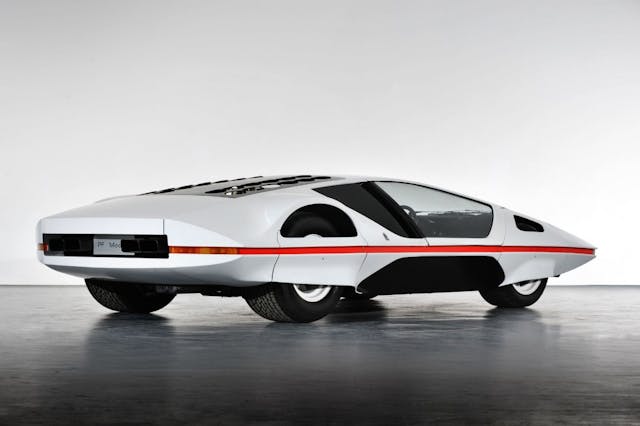
And what an engine it was. The flat-12—hence the abbreviated “boxer” in of the 365 GT4 BB’s name—was based in part on Ferrari’s Formula 1 engines. In the 365 GT4 BB, the engine was longitudinally mounted, with one camshaft per bank of six cylinders. The five-speed transmission sat below the crankshaft, making access … tricky.
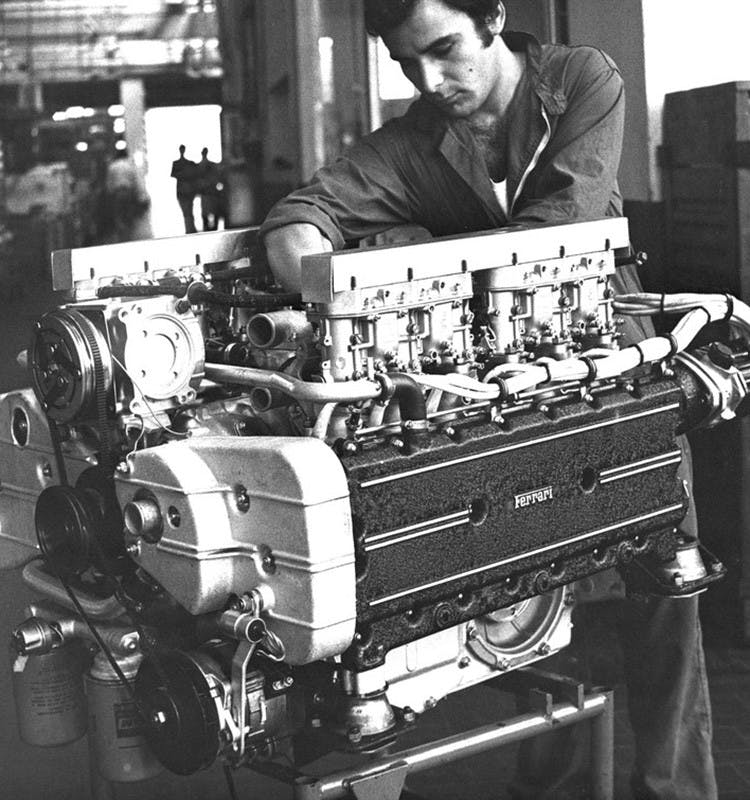
With capacity increased from 2992 cc to 4390 cc and launched into an oil crisis and its accompanying recession, the engine defied any sales slowdown.
So aggressive was the 365 GT4 BB’s styling, with the tear-drop shaped windows and one-piece bodywork front and rear, that all 387 models were sold before it morphed into the 512BB in 1976.
Strange fact: The 365 BB was the first Ferrari to have a “space-saver” spare wheel—an extra that was smaller and skinnier than the four wheels fit from the factory.
BMW 2002 turbo

Car lovers who were old enough to watch the 1972 Olympic Games might remember the parade was led by a BMW Turbo concept car (below). Only two examples of the concept were built, but their 2.0-liter, turbocharged four-cylinder engines helped BMW produce the first turbocharged production sedan.
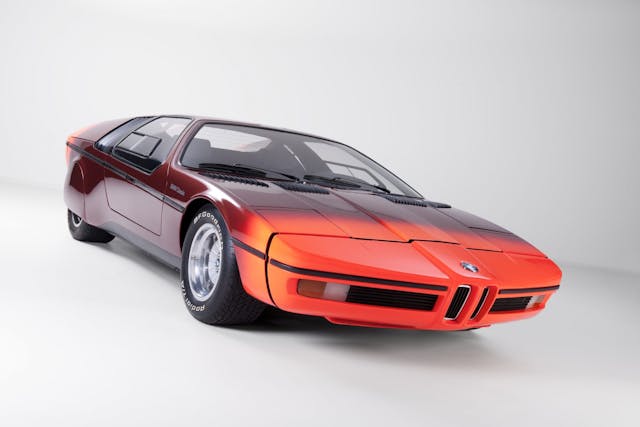
The 2002 turbo, launched in 1973, featured the 2002 sedan’s regular inline four-cylinder, 1990-cc engine enhanced with a KKK turbocharger. The result? Power went from 130 to 170 bhp with a similarly healthy increase in torque. Rather logically, BMW also increased the capacity of the fuel tank, from 46 liters to 70.
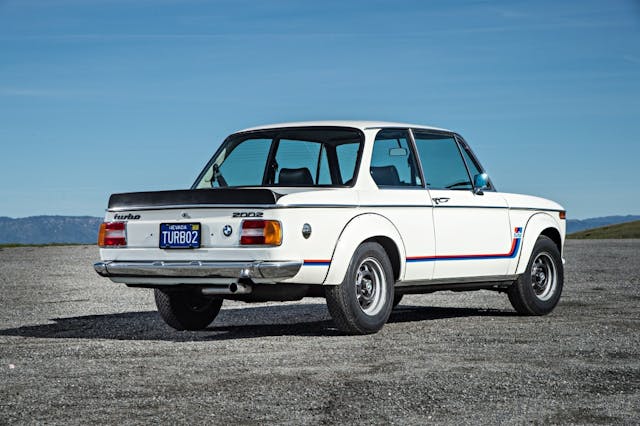
But remember, this was the dawn of turbocharging technology. When the KKK’s boost arrived at around 4000 rpm, it did so with an almighty bang. The driveline was wondrous to some, intimidating to others, and all wrapped up in one awesomely aggressive package.
Tales of 2002 turbo drivers spinning (or worse), caught out by the sudden arrival of unmanageable amounts of turbo boost to the rear wheels, are legendary. Those who first drove the 2002 turbo might not have felt privileged, but today, they seem quite fortunate for driving such a rare beast of a car.
The turbo car’s price was a hefty 40 percent above that of regular, “hot” 2002, the Tii. After just three years on sale, with only 1672 built, BMW canned the 2002 turbo, citing … the oil crisis.
Strange fact: Early models wore “2002 turbo” in mirrored script on their front spoilers so drivers ahead knew exactly what was behind them. (See above.) BMW was criticized for being overly aggressive and quickly dropped the logo.
MGB GT V8
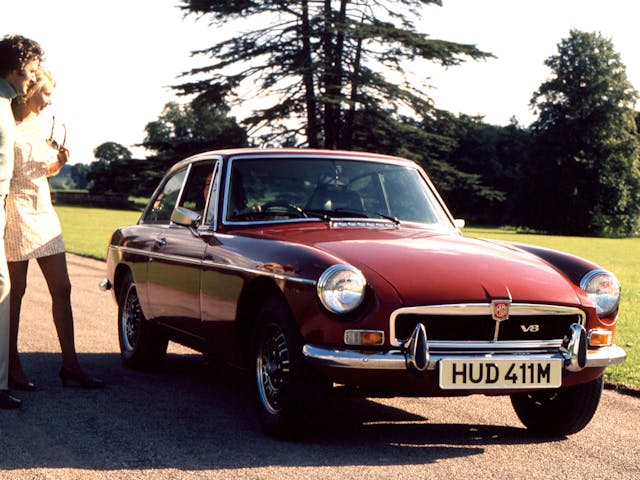
It often takes an outsider to call attention to something that’s sitting right under the nose of a company’s board. So it was with Ken Costello and MGB.
The British engineer and racing driver realized that the 3.5-liter aluminum V-8 designed by Buick in Detroit and used for Rovers would be perfect for the MGB, the company’s two-door, four-cylinder-powered sports car. On his own, he duly slotted the V-8 into the petite coupe—critically, without the enormous redesign that MG’s British Leyland bosses had initially feared.
Looking on enviously, Leyland realized this outsider in a garage in Kent had cleverly stumbled on the solution to its underpowered MGB and BGT coupe. Leyland boss Lord Stokes summoned Costello and asked to look at his prototype BGT V8.
During the meeting, Stokes said Leyland would rather make its own than buy the idea from Costello. The engineer bluntly told them it would take months to engineer and walked out. Leyland went ahead without Costello and did its own MG BGT V8.
The 90-degree Buick/Oldsmobile/Pontiac 215-cubic-inch V-8 fitted neatly into the engine bay and was actually the same weight as the 1798-cc four-pot it replaced. But this was a hurried, low-budget project and sales were handicapped by the car’s high price.
A handful of early cars made it to the U.S. but the vast majority of the 2591 models built were right-hand drive, built for the U.K..
Strange fact: MG and British Leyland neither credited nor paid Ken Costello for his work on the BGT V8.
VW Scirocco
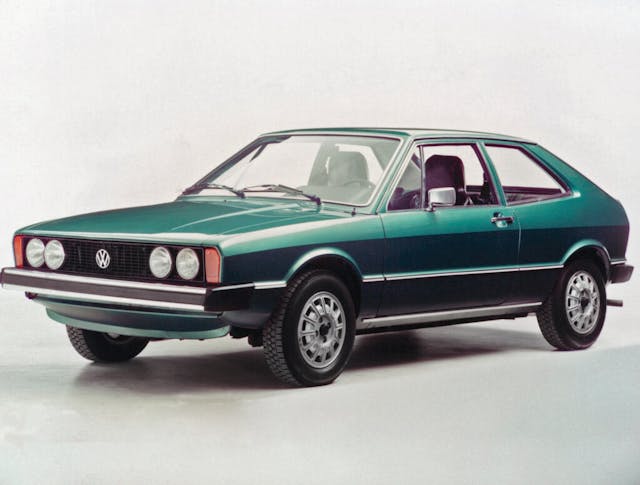
When you’ve got two models that have been on sale forever, and both are still successful, you’ll be hard-pressed to decide how to replace them. If you’re VW in the early 1970s, you might consult Giorgetti Giugiaro’s ItalDesign.
The famous Italian design house had been working on a coupe for Alfa Romeo and proposed something similar to Volkswagen. Ferdinand Piëch, then head of VW, realized that such a car would solve some significant problems. Volkswagen was looking to supersede the economy-minded Beetle and the sporting Karmann Ghia, and a handsome, Giugiaro two-door would a neat solution. The benefits didn’t end there, either.
Giugiaro had suggested building the Scirocco on the forthcoming Golf’s platform. This meant VW could launch the Scirocco six months before the Golf, enabling the company to iron out any trouble with the platform before production of the volume-selling model began.
Scirocco engine capacities varied from 1.1 to 1.7 liters, the latter being a bigger engine for the U.S. market. American-market cars featured twin round headlamps on either side of the grille. The lights prompted thousands of European Scirocco owners to upgrade their single rectangular lamps.
The Scirocco was a remarkable success for VW: It sold half a million units over the Mk1’s seven-year lifespan. Not bad considering the Scirocco almost hadn’t existed.
Strange fact: VW initially rejected building a low volume sports car until Karmann revealed it would go bust if it didn’t have something to build in place of its long-lived Ghia.
Check out the Hagerty Media homepage so you don’t miss a single story, or better yet, bookmark it.
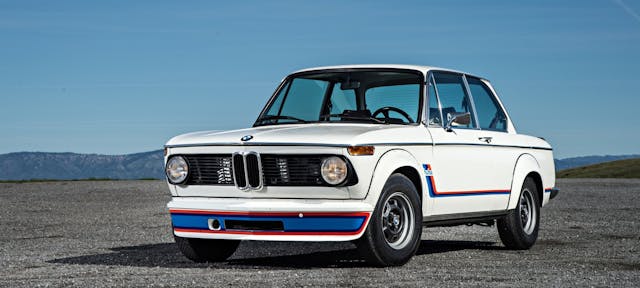
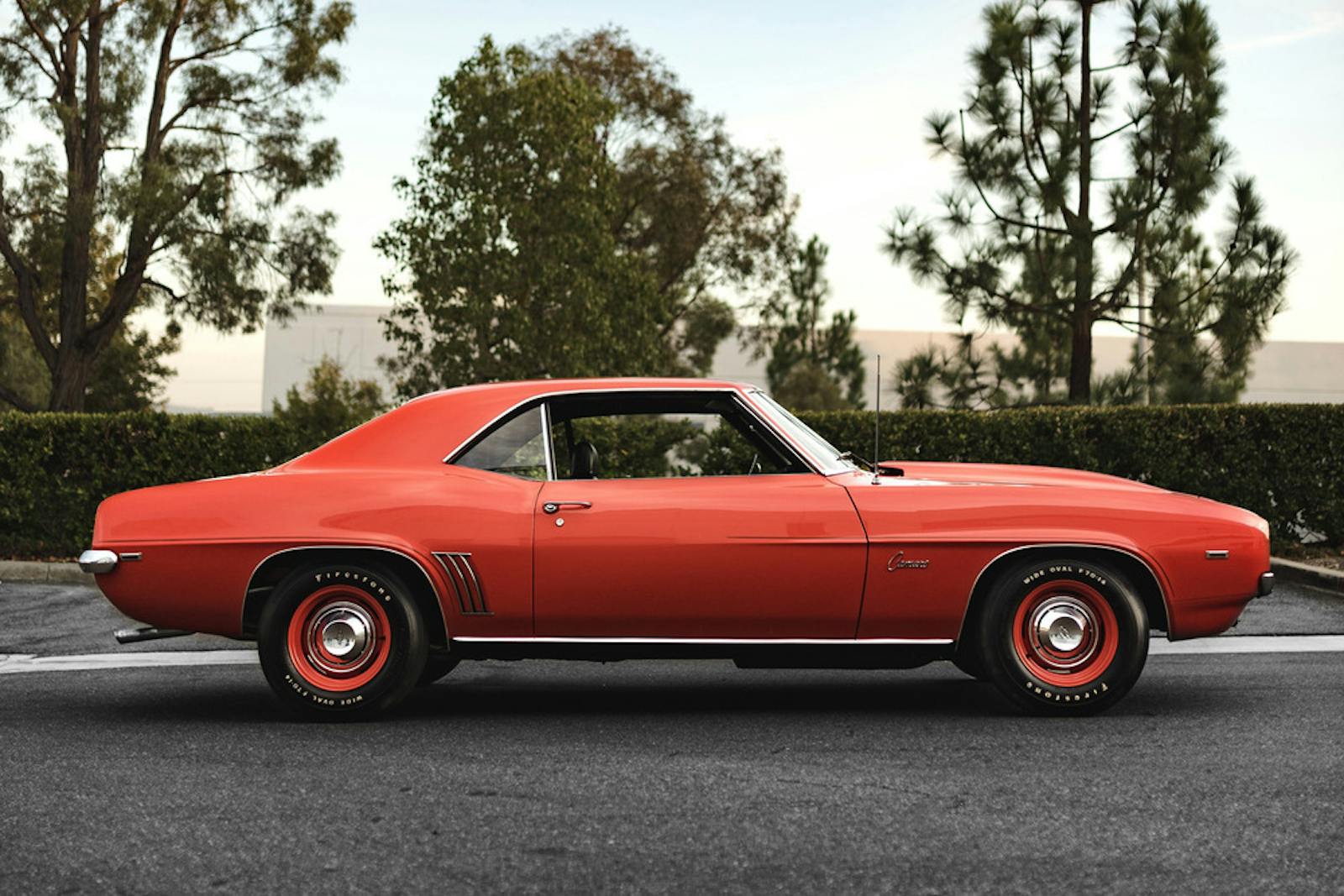

The article needs American cars
Regarding the creation of the first generation scirocco I believe you’ve jumped the gun by a few years. It’s debut was 48 years ago (1974) and crediting Ferdinand Piech with its inception seems to be 19 years before he worked for VW. His employment with Audi and connection to Italian design brought about the formidable Audi Quattro which bears a strong resemblance to a Scirocco but was built several years later.
Driving my ‘75 was the most fun on 4 (or 3) wheels I ever had!
All foreign junk as usual.
totally agree with you who care about the foreign junk
Boxer YES!!! Other 3, No way, I could care less about them, no interest in any of them… But to each their own….
I’m pretty sure the Ferrari Boxer had two cams per bank of cylinders.
Buick Cutlass with the turbocharged engine????
That was a typo on my part and I have edited that comment to reflect such.
My first new car was a 1980 VW Scirocco, alpine white with red leatherette and a 4 speed manual. I was a junior in college and spent every sent I had on my dream car. Needless to say I was big man on campus. I would stay in the VW family with an 86 GTI, 88 GTI 16V, 90 Corrado, 93 Fox, 2018 Golf Alltrack.
My pride and joy is my 81 Scirocco S purchased when I turned 50 and lovingly restored and insured by Hagerty.
73 Jaguar XJ12 SWB in the US. They may have had them in England in 72 but the 73 was the last Series I car and the V12 is still an amazing engine- if somewhat high maintenance. The 12 made the XJ the ultimate grand touring car of that era.
I can’t say that any of them do much for me.
Yes bring out the American 73’s how about the COUGAR with the 351-C
@JamesFoxall – This is the first time I’ve read that the BB was based on the Modulo. Would be interested to know what your source was for that info. Are you sure you didn’t mean to reference the P6?
https://www.hagerty.com/media/automotive-history/1968-ferrari-p6-prototype/
I’m curious as to WHY not one-not one American car was featured here. Is this newsletter becoming a foreign only thing? Maybe it’s time to price my insurance to a company that likes USA made cars.
There are probably others, but going off the title “significant cars turning 50 in 2023”, what about the 1973 Porsche 911 RS? Arguably the holy grail of early 911s, other than the uber-rare 1967/1968 911R. The ’73 RS set the stage for ALL subsequent 911 “performance” models, as if the 911 wasn’t performance enough in pedestrian form.
Well , in 1975 to 1980 I worked for a company called M&G Convoy ( car transporters) out of a yard in New Jersey hauling new Chryslers and Dodge cars and trucks, they came to our yard on the rail. I was new man on the seniority list, when all the loads were taken, I had to go to PORT NEWARK NJ and work out of the import yard. I got to load Volkswagen’s and Porsche and MG’s and a lot of others. I remember driving Sciroccos,as fast as I could up to the truck before loading, what fun!